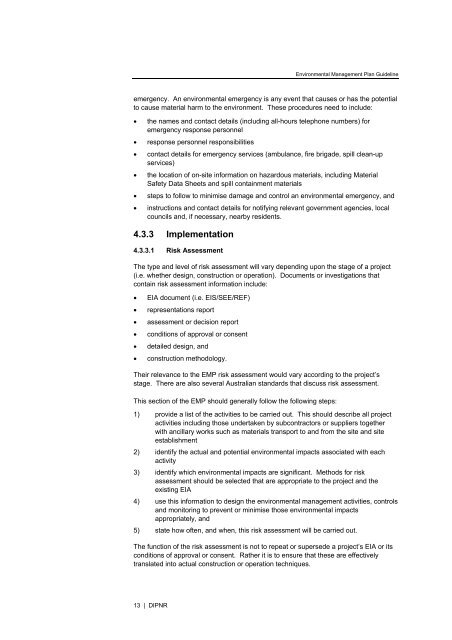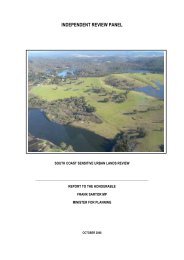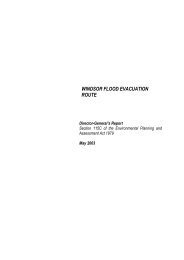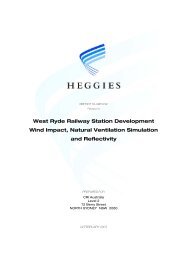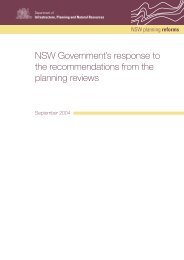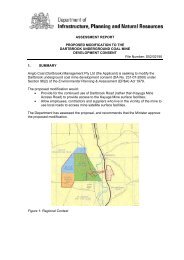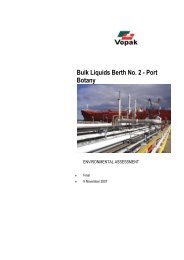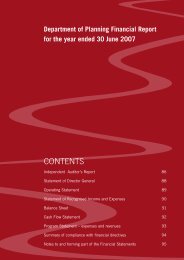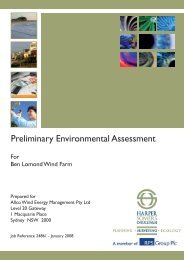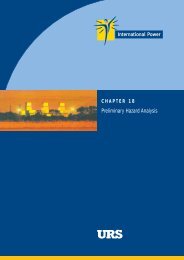Guideline for the Preparation of Environmental Management Plans
Guideline for the Preparation of Environmental Management Plans
Guideline for the Preparation of Environmental Management Plans
You also want an ePaper? Increase the reach of your titles
YUMPU automatically turns print PDFs into web optimized ePapers that Google loves.
<strong>Environmental</strong> <strong>Management</strong> Plan <strong>Guideline</strong><br />
emergency. An environmental emergency is any event that causes or has <strong>the</strong> potential<br />
to cause material harm to <strong>the</strong> environment. These procedures need to include:<br />
• <strong>the</strong> names and contact details (including all-hours telephone numbers) <strong>for</strong><br />
emergency response personnel<br />
• response personnel responsibilities<br />
• contact details <strong>for</strong> emergency services (ambulance, fire brigade, spill clean-up<br />
services)<br />
• <strong>the</strong> location <strong>of</strong> on-site in<strong>for</strong>mation on hazardous materials, including Material<br />
Safety Data Sheets and spill containment materials<br />
• steps to follow to minimise damage and control an environmental emergency, and<br />
• instructions and contact details <strong>for</strong> notifying relevant government agencies, local<br />
councils and, if necessary, nearby residents.<br />
4.3.3 Implementation<br />
4.3.3.1 Risk Assessment<br />
The type and level <strong>of</strong> risk assessment will vary depending upon <strong>the</strong> stage <strong>of</strong> a project<br />
(i.e. whe<strong>the</strong>r design, construction or operation). Documents or investigations that<br />
contain risk assessment in<strong>for</strong>mation include:<br />
• EIA document (i.e. EIS/SEE/REF)<br />
• representations report<br />
• assessment or decision report<br />
• conditions <strong>of</strong> approval or consent<br />
• detailed design, and<br />
• construction methodology.<br />
Their relevance to <strong>the</strong> EMP risk assessment would vary according to <strong>the</strong> project’s<br />
stage. There are also several Australian standards that discuss risk assessment.<br />
This section <strong>of</strong> <strong>the</strong> EMP should generally follow <strong>the</strong> following steps:<br />
1) provide a list <strong>of</strong> <strong>the</strong> activities to be carried out. This should describe all project<br />
activities including those undertaken by subcontractors or suppliers toge<strong>the</strong>r<br />
with ancillary works such as materials transport to and from <strong>the</strong> site and site<br />
establishment<br />
2) identify <strong>the</strong> actual and potential environmental impacts associated with each<br />
activity<br />
3) identify which environmental impacts are significant. Methods <strong>for</strong> risk<br />
assessment should be selected that are appropriate to <strong>the</strong> project and <strong>the</strong><br />
existing EIA<br />
4) use this in<strong>for</strong>mation to design <strong>the</strong> environmental management activities, controls<br />
and monitoring to prevent or minimise those environmental impacts<br />
appropriately, and<br />
5) state how <strong>of</strong>ten, and when, this risk assessment will be carried out.<br />
The function <strong>of</strong> <strong>the</strong> risk assessment is not to repeat or supersede a project’s EIA or its<br />
conditions <strong>of</strong> approval or consent. Ra<strong>the</strong>r it is to ensure that <strong>the</strong>se are effectively<br />
translated into actual construction or operation techniques.<br />
13 | DIPNR


